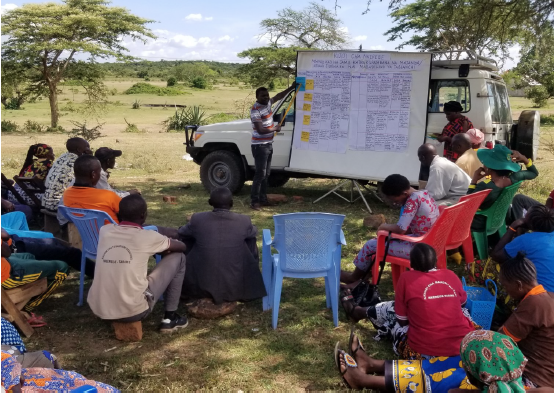11th Workshop for Participatory Research Design (WPRD)

SAT has trained farmers in various Agroecological (AE) practices ranging from farm preparation to post-harvest handling. Farmers who have been practicing AE acknowledge that AE practices generate many benefits, including environmental, health, economic, and social benefits, among others. The socioeconomic benefits include improved household food security and increased income.

Farmers have been involved in several participatory research with students from the Sokoine University of Agriculture. This year, farmers have raised more farming challenges that they would love to work with researchers (students) to address them. Among the farming challenges they provided are:
- Is the diluted 15 days up to 30 days collected cow urine still effective for sunflower crops? How long can the diluted cow urine stay and be effective? - A problem reported by Kimambila Village farmers in Mvomero DC.
- Can we get the biopesticides with the specific dosage that can treat the tomato-wilt disease? – A problem reported by Kimambila Village farmers in Mvomero DC.
- Pastoralists still feel there is a need to research the effectiveness of the stored (one-month) shed-dried mixture of moringa and neem leaves since the moringa and the neem leaves are not available for all seasons. Can they harvest the leaves mix and stay with the leaves for over a month and still be effective in controlling the tick on cattle? - A problem reported by Mingo Village pastoralists.
- Farmers from Mgudeni Village are facing a problem of wilting of pigeon peas crops. Is there a biopesticide with specific dosage that can cure this?
- Farmers from Mgudeni Village feel that there is a need to analyze their soil to again see if it’s the reason for pigeon peas crops and come up with recommendations based on biofertilizers to be applied.
- Farmers from Mgudeni Village are facing a problem of wilting of sesame crop. Is there a biopesticide with a specific dosage that can cure this?
- Farmers from Mgudeni Village feel that there is a need to analyze their soil again to see if it is the reason for the wilting problem of the sesame crop and come up with recommendations based on biofertilizers to be applied.
We are very determined to address the concerns raised by farmers to ensure they continue practicing AE on their farms. Apart from training them on best AE practices, we are also dedicated to researching so that, in the end, all the concerns raised by farmers are addressed. Since 2014, we dedicated some financial resources to conduct research on AE which, to some extent, they have provided solutions to what farmers are complaining. AE cannot be isolated from the rapidly growing technology in the agriculture sector.

As a young researcher, you are a part of change by contributing through conducting participatory research with farmers by co-creating knowledge (linking farmers indigenous knowledge and scientific knowledge) to find the solutions that will address the farmers’ concerns raised about practicing AE. We invite Bachelor students from Sokoine University of Agriculture (SUA) who are in year 3 of their study and year 5 of their study for those programs which run for 5 years and master's students to attend the 11th Workshop for Participatory Research Design (WPRD) on 16th November 2024. There you will learn more about the challenges and come up with a concept of addressing the challenge. The best concepts will be selected and supported with TZS 1,100,000/= for undergraduates and TZS 3,300,000/= for Master students. The only way to get these funds is to participate in the workshop and put up a convincing concept note that will show clearly how you will address the challenge.

To participate in this workshop, please send your Expression of Interest (EI) to us through our communication e-mail wprd@kilimo.org not later than 12th November 2024.The students with the best EI will be invited to attend the 11thWPRD. Concepts with a focus of innovating farming equipment to simplify AE practices are highly encouraged.






